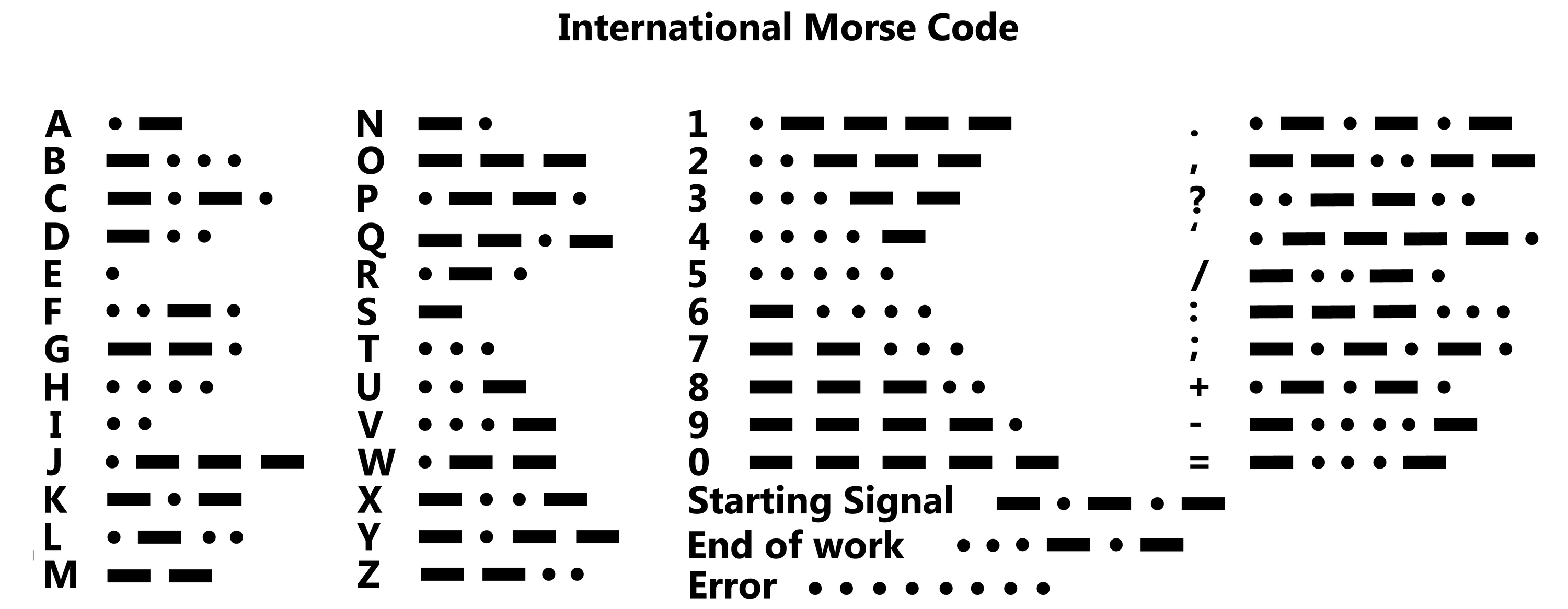Morse Code
Morse code is a language created in the 1830s by Samuel Morse and Alfred Vail for the transportation of electrical signals such as electrical telegraphy and flashlights. Dots and dashes are transmitted by one of these forms and decoded by the receiver. Before phones, this is how you got messages across vast distances.
Morse code is really easy to encode and decode as it just uses the alphabet and a coding sheet.

Here is an example for these challenges.
Encoding
To encode you have to have the message you want to encode:
For an example:
Hello
Now, you need to look at the sheet and see what each letter translates to.
For example:
H = ••••
E = •
Continue with the rest of the letters in the message.
Here's what you should get:
•••• • •–••• •–••• –––
That is the encoded message
Decoding
To decode you must have the message you want to decode.
•••• • •–••• •–••• –––
Notice the spacing between each morse code value. This signifies a change of a letter.
Now, use the conversion sheet to decode the message.

For example:
•••• = H
• = E
Continue with the rest of the message:
HELLO
That is the decoded message! (flag)
Now that you know how to decode morse code, go tackle some of the challenges!
Happy decoding!